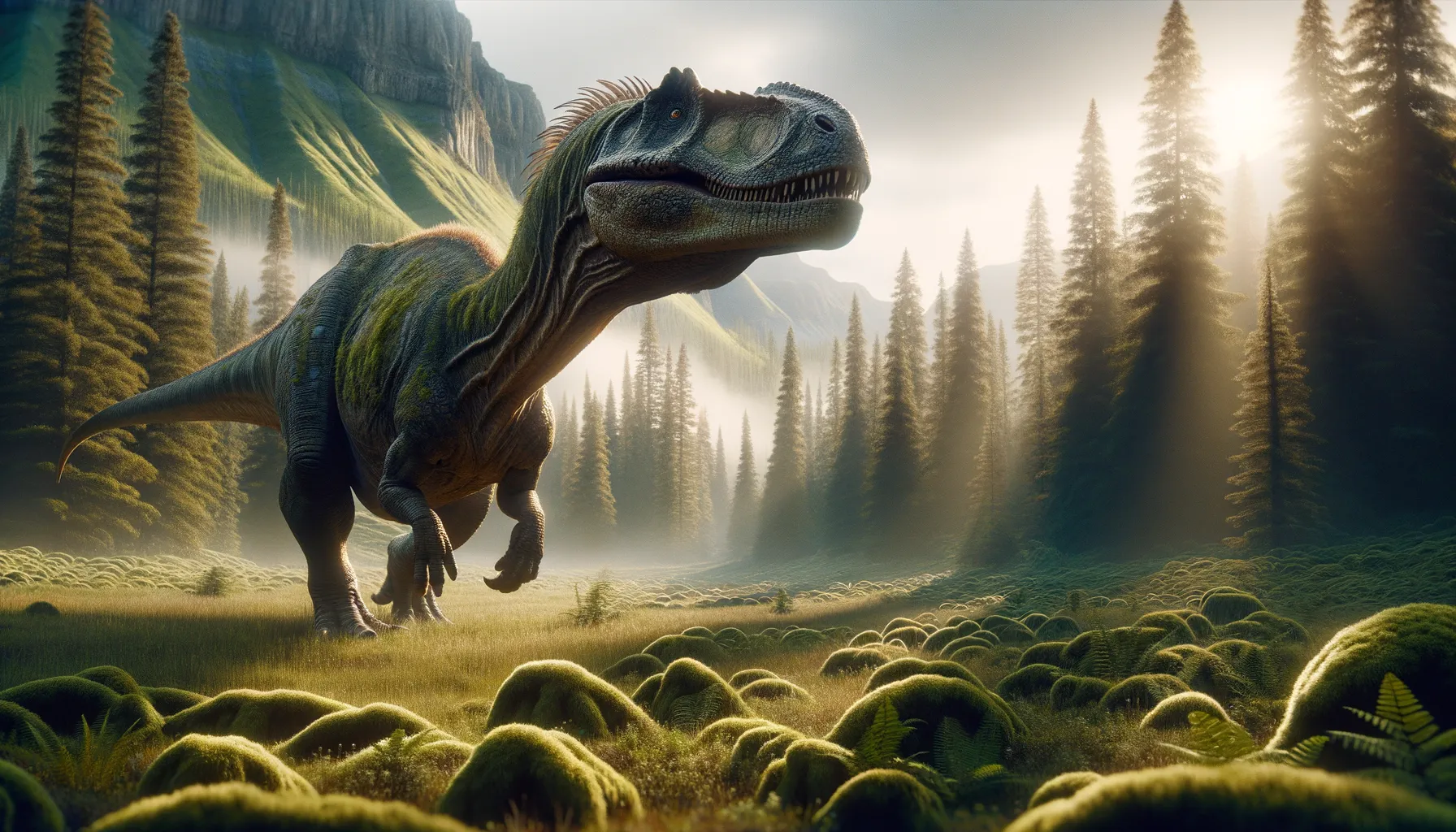
Camptosaurus
Graceful grazer of the Jurassic past.
Period
Jurassic
Length
Around 16-23 feet long.
Height
Up to 4.5 feet at the hip.
Weight
Approximately 1,000 to 2,000 pounds.
Camptosaurus was a plant-eating dinosaur that thrived during the late Jurassic period. Known for its beaked mouth and strong jaws, it fed on a variety of plants. Its hind legs were well-developed for walking while occasionally using its forelimbs. Fossils of this genus have provided significant insights into dinosaur evolution, especially regarding their adaptations for herbivory.
Diet
Camptosaurus primarily fed on low-lying plants, using its strong beak to strip foliage. It likely consumed a variety of plant material, including ferns and conifers, efficiently digesting them with its complex tooth structure.
Hunting
As a herbivore, Camptosaurus did not hunt other animals. It grazed peacefully, foraging for edible plants in its environment, relying on keen senses to avoid predators.
Environmental challenges
Camptosaurus faced challenges like fluctuating climates and the presence of large predators such as Allosaurus. These conditions required alertness and adaptability in finding food and safe habitats. They navigated forests and open landscapes, constantly searching for adequate food supplies and water sources.
Speed
Moderate, capable of quick bursts.
Lifespan
Estimated around 20-30 years.
First discovery
Discovered in 1879 by Othniel Charles Marsh.
Fun Facts
- Camptosaurus was a dinosaur that lived during the Late Jurassic period, about 150 million years ago.
- It was a medium-sized herbivore, reaching lengths of up to 25 feet, or about the size of a small bus.
- The name 'Camptosaurus' means 'bent lizard,' referring to its flexible hip bones.
- This dinosaur primarily walked on its hind legs but could also move on all fours, making it quite versatile.
- Fossil evidence of Camptosaurus has been found in North America and Europe, indicating it roamed widely across these continents.
- Camptosaurus is known for having a long, sharp beak like snout, which it used to clip and eat plants.
- Despite its size, Camptosaurus was likely a quick runner and could evade predators with its agility.
Growth and Development
Camptosaurus hatched from eggs, growing rapidly during its first years. Juveniles had to fend for themselves after hatching, likely experiencing high mortality rates. Growth rates suggest they reached maturity within a few years, an adaptation to survive in predator-rich environments.
Habitat
Camptosaurus lived in diverse environments, from forests with plenty of vegetation to open plains. These areas provided abundant plant resources necessary for their diet and opportunities to escape predators. The habitats sustained a variety of dinosaur species, all sharing the rich ecosystems.
Interaction with other species
Camptosaurus coexisted with both herbivorous and carnivorous dinosaurs. It relied on its agility to evade predators while competing with other herbivores for food. Social behaviors might have included group living for protection, although this is still debated among paleontologists.
Natural lifespan
Lived up to 30 years in the wild.
Reproduction
Camptosaurus reproduced by laying eggs, likely in nesting sites. Parent dinosaurs possibly guarded nests until hatching. Little is known about parental care post-hatching, but young were probably left to develop independently.
Social behaviour
Social behaviors in Camptosaurus may have included group foraging and possibly communal nesting. Evidence of herding behavior is limited but conceivable given its herbivorous nature. Interaction within groups could provide safety from predators.
Fossil locations
Fossils of Camptosaurus have been found mainly in North America. Specimens are prominently unearthed in the Morrison Formation, providing insights into its structure and lifestyle. Other regions have yielded related species, expanding the context of its existence.
